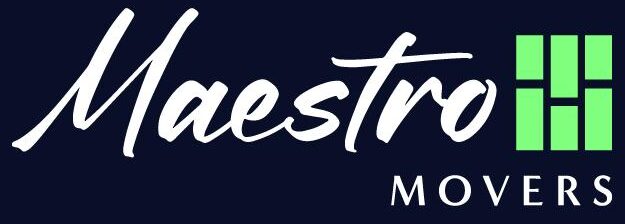
When you’re tasked with creating a moving checklist for a large corporation, it’s essential to start by assessing the company’s needs and gathering input from employees.
You’ll want to break down the process into manageable sections, like logistics and communication, while prioritizing tasks that are most urgent.
Setting clear deadlines and assigning roles can help streamline the transition, but the real challenge lies in ensuring everyone stays informed and engaged.
As you consider these elements, think about the potential pitfalls you might encounter and how to navigate them effectively.
Assessing Company Needs
Moving your office can be a major undertaking. To ensure a smooth and successful transition, careful planning is essential. Here’s a breakdown of key factors to consider:
Assess Your Company’s Needs:
- Gather Team Input:
Space Requirements: Determine the ideal square footage per employee and identify specific departments or teams that require dedicated spaces.
Facility Needs: Consider essential amenities such as:
- Meeting Rooms: Size and number of rooms to accommodate different meeting styles (e.g., board meetings, brainstorming sessions, video conferences).
- Collaborative Spaces: Areas for informal interaction and teamwork, such as break rooms, lounges, and open-plan areas.
- Employee Amenities: Restrooms, kitchenettes, showers, and outdoor spaces.
- Technology Infrastructure: Evaluate current and future needs for data, Wi-Fi, and other technology.
Growth Projections:
Expansion Plans: Determine your anticipated growth rate and how much flexibility the new space should offer to accommodate future expansion.
- Scalability: Consider options for easily increasing or decreasing space as needed, such as modular office layouts or lease terms with flexible options.
Evaluate Location Factors:
- Accessibility:
- Employee Commuting: Consider proximity to public transportation, highways, and employee residential areas.
- Client Accessibility: Ensure easy access for clients and visitors, including adequate parking and clear signage.
- Amenities:
- Nearby Amenities: Evaluate the availability of nearby restaurants, cafes, shops, and other amenities that can enhance employee well-being and convenience.
- Local Environment: Consider the overall character and atmosphere of the neighborhood, as this can significantly impact employee morale and company culture.
Determine Budget and Timeline:
- Budget Constraints: Establish a realistic budget for the entire move, including:
- Rent or Purchase Costs: Consider the cost of the new space and any associated fees.
- Renovation Costs: Determine the budget for any necessary renovations or upgrades to the new space.
- Moving Costs: Factor in the costs of professional movers, packing materials, and any potential disruptions to business operations.
- Timeline: Set a realistic timeline for the entire moving process, from initial planning to final occupancy.
By carefully considering these factors and involving your team throughout the process, you can ensure a successful office move that enhances productivity, improves employee satisfaction, and supports your company’s long-term growth.
Developing the Checklist
To ensure a smooth relocation, start by developing a detailed moving checklist tailored to your company’s needs.
Break Down the Moving Process
Divide the process into sections:
- Logistics: Arrange transportation and coordinate timelines.
- Employee Communication: Keep staff informed and updated.
- IT Setup: Plan the secure transfer and reinstallation of office technology.
Assign specific tasks to relevant team members for each section to streamline responsibilities.
Prioritize Tasks and Set Deadlines
Organize tasks by urgency:
- High Priority: Book a moving company and secure the new office space.
- Mid-Priority: Pack non-essential supplies and transfer utilities.
- Low Priority: Plan decorations or personalize workspaces.
Set deadlines for each task and include key milestones, like informing employees and the final moving date.
Address Special Requirements
Consider unique needs, such as:
- Handling sensitive documents securely.
- Moving specialized equipment.
- Ensuring regulatory compliance.
Assign these tasks to experienced team members or professionals.
Keep the Checklist Accessible
Use a shared document or project management tool for easy access and regular updates. This ensures alignment and prevents miscommunication.
Stay Organized for a Successful Move
A well-structured, accessible checklist helps streamline the relocation process, minimize stress, and set the tone for a successful transition.
Implementing the Plan
Effective execution of your relocation plan requires clear communication, coordinated efforts, and efficient use of resources. Here’s how to ensure a smooth transition:
Assign Roles and Foster Accountability
- Delegate Tasks: Assign specific roles to each department or individual, ensuring everyone understands their responsibilities.
- Regular Check-Ins: Schedule consistent updates to monitor progress and address concerns promptly.
Utilize Project Management Tools
- Track Progress: Use tools like Trello, Asana, or Microsoft Teams to monitor tasks and deadlines.
- Real-Time Updates: Enable team members to adjust timelines or respond to unforeseen challenges quickly.
- Resource Sharing: Provide easy access to the moving checklist and other essential documents.
Centralize Communication
- Designate a Point of Contact: Assign a dedicated individual to manage queries and resolve issues efficiently.
- Streamline Coordination: Keep communication channels open to reduce confusion and promote transparency.
Prepare Employees for the Move
- Training Sessions: Familiarize staff with the new office layout, equipment, and systems to ensure a smooth adjustment.
- Boost Morale: Celebrate milestones and achievements during the process to maintain positivity.
Ensure a Smooth Transition
By combining clear communication, smart tools, and team engagement, you’ll not only simplify your relocation but also create a positive and organized moving experience for everyone involved.
